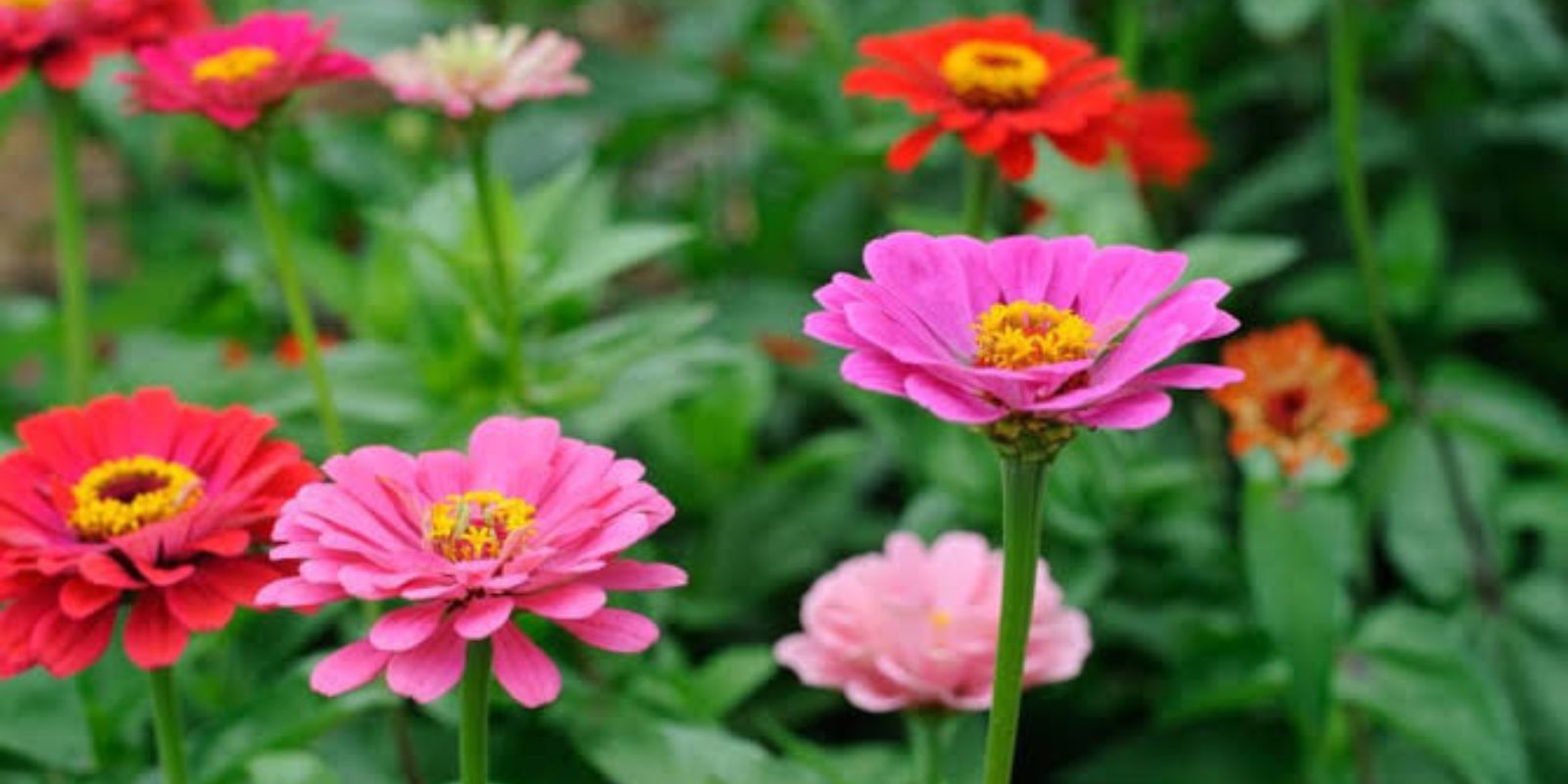Zinnias, with their dazzling array of colors and remarkable resilience, are one of the most beloved garden flowers worldwide. Originating from Mexico and Central America, these cheerful blooms have a history deeply rooted in both ancient cultures and modern horticulture. From their vibrant symbolism to their cultural significance, zinnias are more than just garden staples—they’re a celebration of endurance and joy.
The Origins of Zinnias: From Aztecs to European Gardens
The story of zinnias begins with the Aztecs, who were among the first to cultivate these striking flowers. They referred to zinnias as “plants that are hard on the eyes” due to their intense colors. The flowers caught the attention of Johann Gottfried Zinn, a German botanist, who introduced them to Europe in the 18th century. Through selective breeding, zinnias evolved into the versatile plants we know today, available in an incredible range of colors, sizes, and flower shapes.
Symbolism and Meaning of Zinnias
The symbolism of zinnias revolves around endurance, remembrance, and affection. Despite their humble beginnings, these flowers have come to represent:
- Endurance in Adversity: Zinnias thrive in harsh conditions, including extreme heat and drought, making them a symbol of resilience.
- Lasting Affection: Often given as tokens of friendship and love, zinnias embody lasting relationships.
- Joyous Optimism: With their bright colors and cheerful blooms, zinnias inspire happiness and positivity.
- Remembrance: Different hues of zinnias carry specific meanings, often tied to memories and friendships.
Native Americans, particularly the Navajo tribe, hold zinnias in high regard. For them, zinnias are sacred Life Medicines, celebrated for their medicinal and cultural significance. The flowers are believed to have antibacterial and anti-inflammatory properties and are sometimes used in traditional remedies for skin ailments.
Varieties of Zinnias: Something for Everyone
One of the most remarkable aspects of zinnias is their diversity. Breeders have developed varieties to suit every garden style:
- Dwarf Zinnias: Perfect for containers or borders, these compact plants grow just 6 inches tall.
- Tall Zinnias: These towering beauties can reach up to 4 feet, ideal for cutting gardens.
- Double-Petaled Zinnias: With layers of petals, these blooms resemble dahlias and come in a spectrum of colors.
- Single-Petaled Zinnias: These classic varieties have an understated charm and are a favorite among pollinators.
Zinnias are available in almost every color of the rainbow, from fiery reds and oranges to cool purples, yellows, and even lime green. Their versatility ensures that there’s a zinnia for every gardener.
Growing Zinnias: A Guide for Gardeners
Zinnias are easy to grow and maintain, making them an excellent choice for beginners and experienced gardeners alike. Here’s how to grow these resilient flowers:
- Choose the Right Location
Zinnias thrive in full sunlight. Select a location in your garden that receives at least six hours of direct sunlight daily. - Prepare the Soil
Ensure the soil is well-draining and rich in organic matter. Zinnias prefer slightly acidic to neutral soil with a pH of 6.0 to 7.5. - Planting
- From Seeds: Zinnias grow best when planted directly in the garden. Sow seeds after the last frost date, spacing them 8–12 inches apart.
- From Transplants: You can also start zinnias indoors and transplant them once the weather warms up.
- Watering
Water the plants deeply but allow the soil to dry out slightly between waterings. Overwatering can lead to root rot or fungal diseases. - Fertilizing
Use a balanced fertilizer every four weeks to encourage continuous blooms. Avoid excessive nitrogen, which can lead to lush foliage but fewer flowers. - Deadheading and Pruning
Regularly remove spent blooms to promote new flower production. For taller varieties, pinch back the stems to encourage bushier growth.
The Role of Zinnias in Ecosystems
Zinnias are not just beautiful; they also play an essential role in supporting garden ecosystems. Their brightly colored flowers attract pollinators like bees, butterflies, and hummingbirds, making them a valuable addition to any pollinator-friendly garden. Additionally, zinnias can act as companion plants, repelling harmful pests while encouraging the presence of beneficial insects.
Creative Uses for Zinnias
- Cut Flower Arrangements
Tall zinnia varieties make excellent cut flowers, lasting up to a week in a vase. Their wide range of colors adds vibrancy to any bouquet. - Edible Decorations
While not commonly used for culinary purposes, zinnias are non-toxic and can be used to decorate cakes and salads. - Dried Flowers
Zinnias can be dried and preserved for use in crafts or as long-lasting decorations.
Zinnias and Their Cultural Significance
Throughout history, zinnias have been associated with positive emotions and values. They are often included in wedding bouquets and friendship gardens as symbols of lasting affection and remembrance. In traditional Navajo ceremonies, zinnias are considered sacred and are used in rituals to promote health and well-being.
Why You Should Grow Zinnias
If you’re looking for a low-maintenance, high-impact flower, zinnias are the perfect choice. Their resilience, combined with their ability to thrive in various conditions, makes them a must-have in any garden. Whether you’re planting them for their symbolism, their role in supporting pollinators, or simply their stunning beauty, zinnias are sure to bring joy and color to your outdoor space.
Conclusion
Zinnias are more than just garden flowers—they are symbols of endurance, joy, and affection. With their vibrant colors, ease of care, and rich cultural history, zinnias continue to captivate gardeners and flower enthusiasts around the world. So why wait? Add these cheerful blooms to your garden and enjoy the beauty and meaning they bring year after year.
Do you grow zinnias in your garden? Share your experiences and favorite varieties in the comments below!
#ZinniaFlowers #EnduranceAndJoy #GardeningLove #FlowerGarden #ZinniaMagic #PollinatorFriendlyGardens #VibrantBlooms

